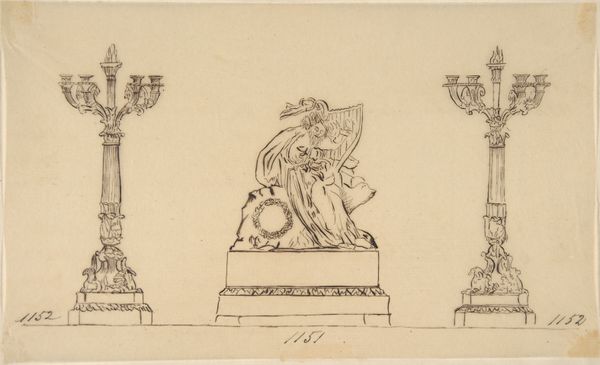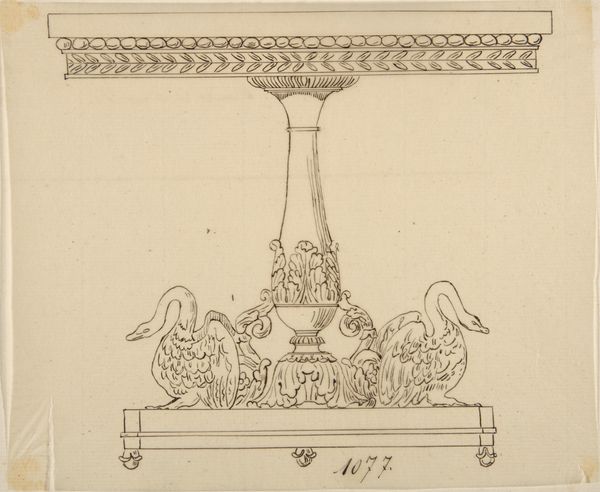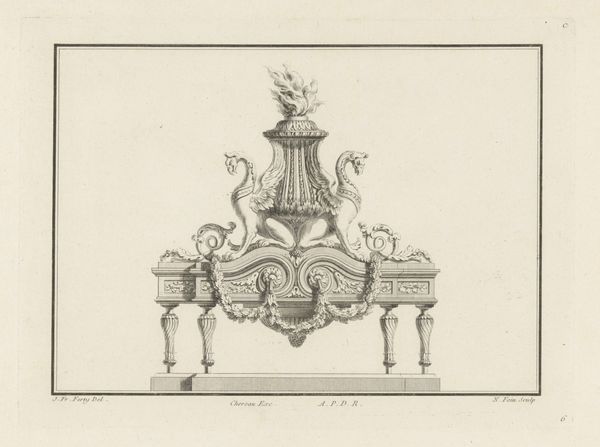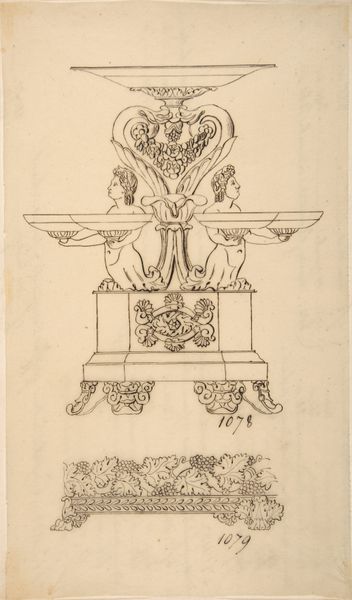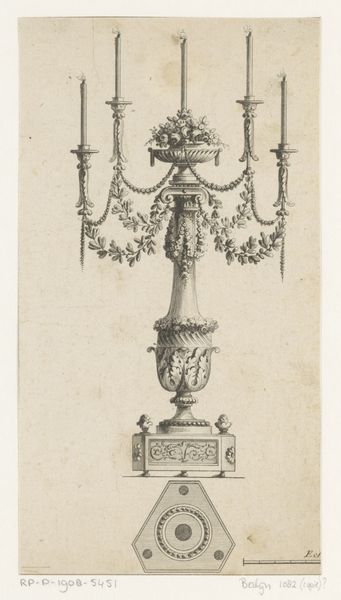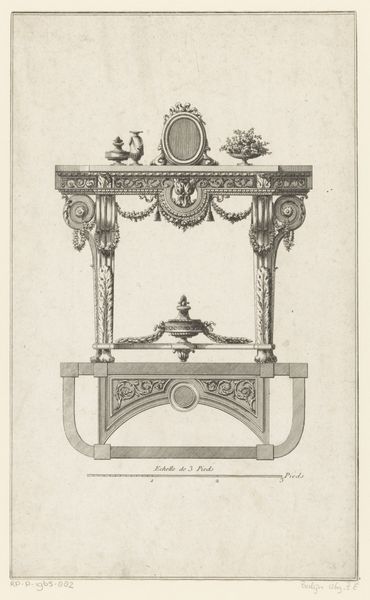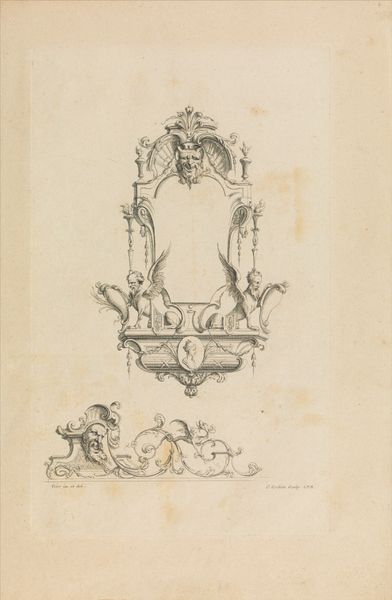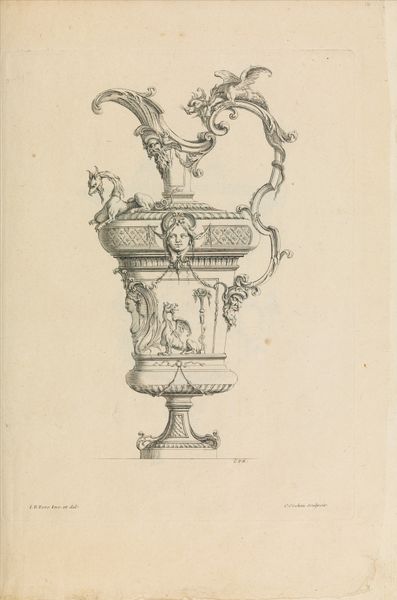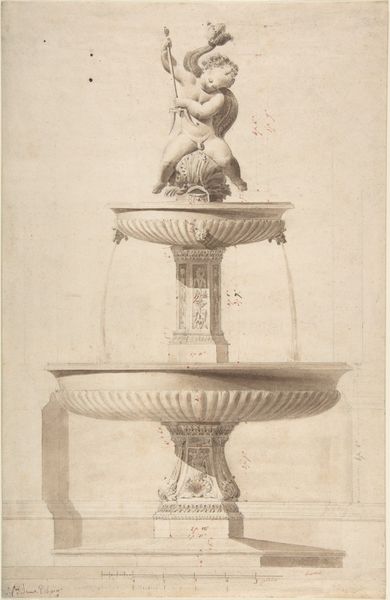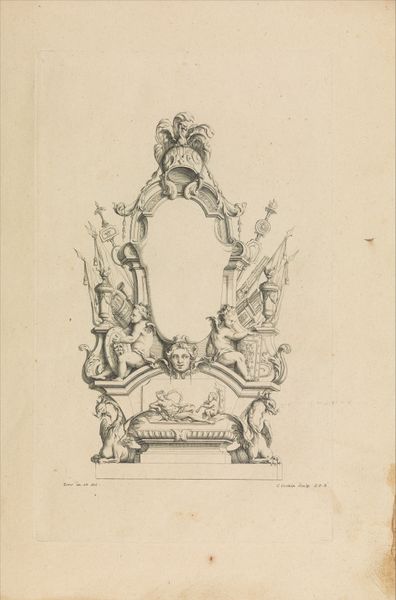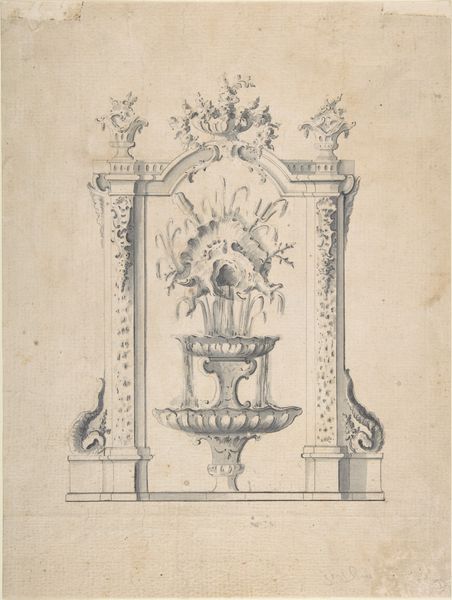
Design for a Set of Candlesticks and a Clock 19th century
0:00
0:00
drawing, print, etching, paper, pencil
#
drawing
#
neoclacissism
# print
#
etching
#
etching
#
figuration
#
paper
#
pencil
#
line
Dimensions: sheet: 5 7/8 x 9 1/8 in. (15 x 23.2 cm)
Copyright: Public Domain
Curator: This is a design drawing from the 19th century, currently held in the Metropolitan Museum of Art. The work is an etching and pencil design for a set of candlesticks and a clock. Editor: My first impression is one of rigid elegance, actually. The lines are so precise, and there’s a stillness, an almost frozen quality to the classical figures. Curator: It’s definitely representative of Neoclassical ideals. You can see it in the symmetry, the controlled lines, and the incorporation of classical motifs, even down to the figure atop what I imagine to be the clock itself, draped in what appear to be togas and laurel. Editor: Right, and it's not just aesthetic; this revival also echoes a sociopolitical ideology. Neoclassicism was often favored by the elites to establish connections to idealized classical pasts to validate their own positions of power in a way. Curator: Absolutely, the clock, as a symbol, also tells of the 19th century’s new emphasis on rational thought, scientific processes, industrial schedules. As instruments of enlightenment, candelabras served an important cultural function for those who used their light. Editor: And this specific design language makes one wonder about the audience. These objects were likely destined for spaces where their symbolism resonated, reflecting the patron’s own understanding and aspirations—what sort of hierarchies existed for light and time within such an establishment? Who held access to these devices and therefore to light and schedules? Curator: Considering these figures, they seem quite at odds with our modern understanding. The classical forms are echoed even at the bottom of each of the candlestick stems as bestial forms. This calls back to the more deeply coded implications and cultural weight placed on human likeness over other beings. Editor: Ultimately, while aesthetically pleasing, viewing designs like these demands an interrogation of the social structures and ideologies they represent. The artistry of rendering classic forms is clear, yet it perpetuates historical dynamics. Curator: Indeed. Understanding these layered meanings invites reflection on how the past continues to inform and shape our own time. Editor: Agreed. Designs aren't just aesthetic exercises, they're deeply embedded within society's tapestry, calling to social ideals both positive and fraught with hierarchy.
Comments
No comments
Be the first to comment and join the conversation on the ultimate creative platform.
